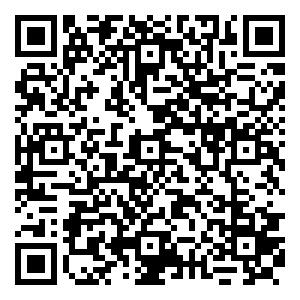|
[1]
|
KAMBEROVI? ?, KORA? M, RANITOVI? M.Hydrometallurgical process for extraction of metals from electronic waste: Part II: Development of the process for the recovery of copper from printed circuit boards (PCBs)[J].Association of Metallurgical Engineers of Serbia, 2011, 17(3):139-149
|
|
[2]
|
JADHAV U, SU C, HONG H.Leaching of metals from large pieces of printed circuit boards using citric acid and hydrogen peroxide[J].Environmental Science & Pollution Research International, 2016, 23:24384-24392 10.1007/s11356-016-7695-9
|
|
[3]
|
ARSHADI M, MOUSAVI S M.Simultaneous recovery of Ni and Cu from computer-printed circuit boards using bioleaching: Statistical evaluation and optimization[J].Bioresource Technology, 2014, 174:233-242 10.1016/j.biortech.2014.09.140
|
|
[4]
|
GHOSH B, GHOSH M K, PARHI P, et al.Waste printed circuit boards recycling: An extensive assessment of current status[J].Journal of Cleaner Production, 2015, 94:5-19 10.1016/j.jclepro.2015.02.024
|
|
[5]
|
GU W H, BAI J F, DONG B, et al.Enhanced bioleaching efficiency of copper from waste printed circuit board driven by nitrogen-doped carbon nanotubes modified electrode[J].Chemical Engineering Journal, 2017, 324: 122-129 10.1016/j.cej.2017.05.024
|
|
[6]
|
YAMANE L H, MORAES V T D, ESPINOSA D C R, et al.Recycling of WEEE: Characterization of spent printed circuit boards from mobile phones and computers[J].Waste Management, 2011, 31 (12):2553-2558 10.1016/j.wasman.2011.07.006
|
|
[7]
|
VERMA H R, SINGH K K, MANKHAND T R.Dissolution and separation of brominated epoxy resin of waste printed boards by using dimethyl formamide[J].Journal of Cleaner Production, 2016, 139:586-596 10.1016/j.jclepro.2016.08.084
|
|
[8]
|
SHI D Y, SHI Y F, LIU D W, et al.A review on recycling solder by mechanical separation methods from waste printed circuit boards[C]//Initiated and organized by the Palestine Polytechnic University (PPU).2015 4th International Conference on Energy and Environmental Protection (ICEEP 2015), 2015: 1032-1036
|
|
[9]
|
LAZAR M, IMRI? I, LENGYELOVA M, et al.Pyrometallurgical processing of electronics waste by plasma technology[J].Chemicke Listy, 2015, 109(7):543-549
|
|
[10]
|
KUMARI A, JHA M K, SINGH R P.Recovery of metals from pyrolysed PCBs by hydrometallurgical techniques[J].Hydrometallurgy, 2016, 165: 97-105 10.1016/j.hydromet.2015.10.020
|
|
[11]
|
HUANG J, CHEN M, CHEN H, et al.Leaching behavior of copper from waste printed circuit boards with Bronsted acidic ionic liquid[J].Waste Management, 2014, 34(2): 483-488 10.1016/j.wasman.2013.10.027
|
|
[12]
|
AWASTHI A K, ZENG X, LI J.Integrated bioleaching of copper metal from waste printed circuit board: A comprehensive review of approaches and challenges[J].Environmental Science & Pollution Research, 2016, 23(21): 1-16 10.1007/s11356-016-7529-9
|
|
[13]
|
YANG Y, CHEN S, LI S, et al.Bioleaching waste printed circuit boards by acidithiobacillus ferrooxidans and its kinetics aspect[J].Journal of Biotechnology, 2014, 173(6):24-30 10.1016/j.jbiotec.2014.01.008
|
|
[14]
|
LIU K, ZHANG Z Y, ZHANG F S.Direct extraction of palladium and silver from waste printed circuit boards powder by supercritical fluids oxidation-extraction process[J].Journal of Hazardous Materials, 2016, 318: 216-223 10.1016/j.jhazmat.2016.07.005
|
|
[15]
|
张莎, 陈梦君, 王继钦, 等. 废旧印刷线路板电解过程中铜的分布特性[J]. 环境工程, 2017, 35(7): 211-125 10.13205/j.hjgc.201707024
|
|
[16]
|
ZHANG S, LI Y G, WANG R, et al.Superfine copper powders recycled from concentrated metal scraps of waste printed circuit boards by slurry electrolysis[J].Journal of Cleaner Production, 2017, 152:1-6 10.1016/j.jclepro.2017.03.087
|
|
[17]
|
ELDRED C.B, TUCSON, ARIC, et al.Method for treating metallic sulfides compounds: US 3464904[P/OL].[2017-08-02](1969-09-02).
|
|
[18]
|
PAUL R.K, GOLDEN, COLO.Process for the recovery metals from sulfides ores through electrolytic dissociation of the sulfides:US3673061[P/OL].[2017-08-02](1972-06-27).
|
|
[19]
|
罗吉束. 矿浆电解的研究现状及展望[J]. 黄金科学技术, 2003, 11(6):37-42 10.3969/j.issn.1005-2518.2003.06.005
|
|
[20]
|
LUYIMA A, SHI H, ZHANG L.Leaching studies for metals recovery from waste printed wiring boards[J].Journal of the Minerals, Metals & Materials Society (TMS), 2011, 63(8):38-41
|
|
[21]
|
董永全, 黄万抚. 隔膜电解技术的应用与发展[J]. 江西有色金属, 2002, 16(3):35-38 10.3969/j.issn.1674-9669.2002.03.011
|
|
[22]
|
楚莹莹. 电解法从废旧印刷线路板中回收金属铜的技术开发[D]. 绵阳: 西南科技大学, 2016
|
|
[23]
|
ADIE G U, SUN L, ZENG X, et al.Examining the evolution of metals utilized in printed circuit boards[J].Environmental Technology, 2017, 38(13/14):1696-1701 10.1080/09593330.2016.1237552
|
|
[24]
|
WINAND R.Chloride hydrometallurgy[J].Hydrometallurgy, 1991, 27(3):285-316 10.1016/0304-386X(91)90055-Q
|
|
[25]
|
GOLDBACH S, MESSING W, DAENEN T, et al.Coupled effects of chloride ions and branch chained polypropylene ether LP-1TM on the electrochemical deposition of copper from sulfate solutions[J].Electrochimica Acta, 1998, 44(2/3):323-335 10.1016/S0013-4686(98)00112-1
|
|
[26]
|
SOMASUNDARAM M, SARAVANATHAMIZHAN R, BASHA C A, et al.Recovery of copper from scrap printed circuit board: Modelling and optimization using responses surface methodology[J].Powder Technology, 2014, 266(6):1-6 10.1016/j.powtec.2014.06.006
|
|
[27]
|
CHU Y Y, CHEN M J, CHEN S, et al.Micro-copper powders recovered from waste printed circuit boards by electrolysis[J].Hydrometallurgy, 2015, 156:152-157 10.1016/j.hydromet.2015.06.006
|
|
[28]
|
MATSUSHIMA H, BUND A, PLIETH W, et al.Copper electrodeposition in a magnetic field[J].Electrochimica Acta, 2008, 53(1):161-166 10.1016/j.electacta.2007.01.043
|
|
[29]
|
FUKUNAKA Y.Structural variation of electrodeposited copper film with the addition of an excess amount of H2SO4[J].Journal of the Electrochemical Society, 1990, 137(1):221-232 10.1149/1.2086445
|


 点击查看大图
点击查看大图



 下载:
下载:
